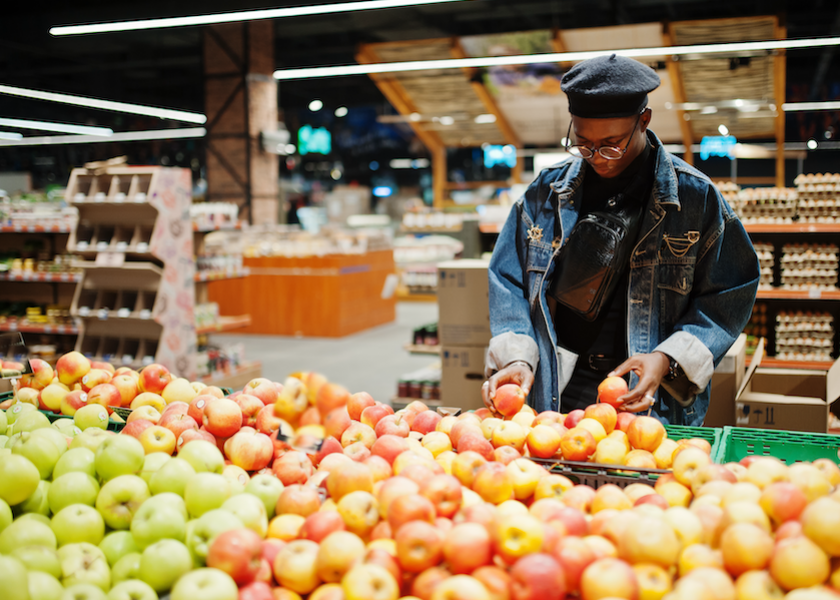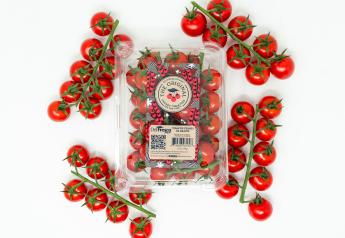‘Normal’ grocery shopping’s return stopped with COVID-19 uptick

A mere few months ago, nine in 10 Americans expected to celebrate the winter holidays like they would normally, according to a June survey by 210 Analytics. But the fall’s upswing in COVID-19 case counts is yet again disrupting the Halloween through New Year’s Day holiday celebrations.
A second wave of the study in September found that 51% of grocery shoppers now expect COVID-19 to have some level of impact on their plans rather than celebrating in their traditional, typical ways, according to a new report by 210 Analytics with IRI Integrated Fresh data collected through September.
In 2020, winter holiday gatherings were smaller and home-centric, and it’s likely 2021 will see some of the same.
The altered shopping patterns — including more online shopping and fewer but larger trips — may favor fruit and vegetables with longer shelf life as well as push more dollars to frozen and canned.
Helping shoppers plan for the week can be a great way to keep the dollars in fresh produce.
“The multi-month normalization of consumption and grocery shopping patterns came to a halt in August, hand-in-hand with an uptick in COVID-19 case counts,” IRI fresh team leader Jonna Parker said in the report. “In September, the IRI survey of primary grocery shoppers once more found an elevated share for at-home meal preparation, at 79%, compared to the July low of 76.6%.”
The survey found that more people returned to buying groceries online.
During the height of the pandemic, as many as 20% of trips were online, according to the report. This dropped to a low of 11% in July. In August, the online share of trips increased to 13%, and in September the share reached 14%.
“Generally speaking, an opportunity gap remains for fresh produce when comparing how often center-store items land in online baskets versus perishables,” Parker said in the report.
But fresh produce is winning among all fresh items, representing 12 out of the top 15 fresh items in online baskets.
“While there is room to improve, consumers are starting to rely on their local grocer to pick the fresh produce for them, which is an important area of growth in coming weeks, months and years,” she said.
Between the changes in consumer consumption and buying patterns, high inflation and severe supply chain disruption and constraints, fresh produce retailing remains in flux.
The stellar 2020 performance for fresh produce was secured by better trip conversion and an increase in spend per trip. In 2021, engagement remained high with only small decreases that could be attributable to farmers markets, roadside stands and other alternative formats reopening.
According to the IRI survey through Sept. 26:
- 98.8% of U.S. households purchased fresh produce at least once in the first three quarters of 2021. That is almost unchanged, down a mere 0.3% from the same period in 2020.
- During January through September, fresh produce buyers averaged 56.4 product trips, which was down 0.6% but still highly elevated versus 2019.
- Shoppers spent an average of $8.55 per trip, up 1.4% over the same period in 2020.
- For the first nine months, shoppers spent a total of $482.34 per buyer, which was up 1.6% over 2020.
Year-to-date, prices for total fresh produce are about 6% higher than they were last year, according to the report. Inflation for fruit is above average, at 7.6% year-to-date through Sept. 26. Fruit prices during September 2021 were 8.9% higher than in September 2020, while fresh vegetable prices were 4.9% higher.
But week-by-week fresh produce sales were good.
“September delivered the strongest year-on-year results we have seen since having to go up against the pandemic sales peaks in March,” Joe Watson, Produce Marketing Association’s vice president of marketing and engagement, said in the report.
Both fruit and vegetables saw higher gains in September.
Fruit’s year-on-year gains improved by 8.8%, and vegetables are now close to year-ago levels, decreasing by 0.7%.
“If the growth trajectory remains the same, vegetables will be back in the plus come October,” Watson said.
The difference in fruit and vegetables’ year-over-year performance lies in 2020 sales results.
Vegetables had much higher gains in 2020, which means a tougher road for growth this year, he said. And fruit has experienced slightly higher inflation so far in 2021 than vegetables, which boosts dollar sales gains.







